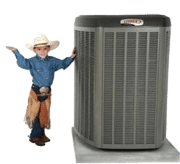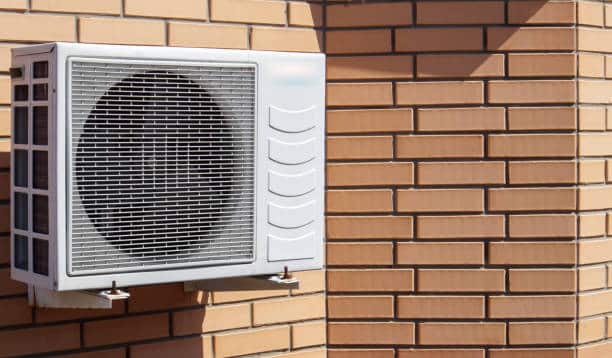Mini-Split HVAC systems are an efficient and cost-effective way to heat and cool a single room or an entire home. This guide will explain the basics of Mini-Split HVAC systems, including their components, pros, installation costs, and tips for selecting the right system for your Baytown, TX home.
Components: Mini-split HVAC systems consist of two main components: the outdoor condensing unit and one or more indoor air handlers. The condensing unit houses a compressor, fan motor, refrigerant lines, and other electronic components that work together to regulate temperature. The air handler units contain evaporator coils that can be installed on walls or ceilings near specific areas you want to control the climate in within your home.
Pros of Mini Split HVAC Systems:
- High efficiency – Mini split systems are much more energy efficient than traditional heating and cooling systems, meaning lower utility bills over time.
- Low-impact installation process – Installation of a mini-split system is low-impact, so you won’t have to worry about significant construction or renovation costs
- Flexible zoning – With multiple air handlers in your home, you can customize the climate in each area by turning on some zones and leaving others off.
- Quiet operation – Mini split systems run quietly without disruption to the peace and quiet of your home.
- Long-lasting performance – With proper maintenance and repairs when needed, these systems will last up to 15 years or longer.
Installation Costs: The cost of a mini-split system varies depending on the size and complexity of your setup. Expect installation to start around $2,000 – $3,000 for a basic single-zone setup. For multiple zones or complicated setups, expect installation costs to be higher.
10 Tips for Selecting the Right Mini Split System:
- Determine the size of your space: Mini-split systems are rated by their cooling capacity (BTUs) and can range from 8,000 to 36,000 BTUs. The size you need will depend on the size of the room or space you want to cool.
- Determine how much insulation your home has: Knowing whether your walls, doors, and windows are insulated properly is important for selecting a unit that will be effective at cooling your space.
- Check local regulations: Some states have restrictions on window air conditioning units or mini-splits; check with your local government before installation.
- Select an efficient model: Look for an Energy Star-rated model that meets statutory efficiency requirements.
- Consider the features: Know what you’re looking for in a mini-split system and select one that offers the features and capabilities you need, including temperature control, auto shutoff, air cleaning, etc.
- Choose the right installation location: Make sure that there is enough space between your unit and furniture or other obstacles so that it can run efficiently.
- Select an indoor unit style: There are several types of indoor units available such as wall-mounted, under-ceiling, floor-standing units, or cassette models. Choose the one that best suits your needs.
- Make sure it will fit: Measure both the indoor and outdoor areas to make sure you select a unit that will fit in the space.
- Know your noise levels: Some mini-split systems can be louder than others so it’s important to know what kind of noise level you are comfortable with.
- Hire a professional installer: Installing a mini-split system correctly is essential for ensuring optimal performance and energy efficiency. It’s best to hire an experienced technician who knows how to install these types of systems properly and safely.
At Ainsworth & Co., we provide professional installation of mini-split systems for residential homes in the Baytown area. Our team of experienced technicians will help you select the right system for your home and install it properly so that you can enjoy optimal performance and energy efficiency.
Contact Ainsworth & Co. today at 281-837-8454 to learn more about our services or to get a free quote.











